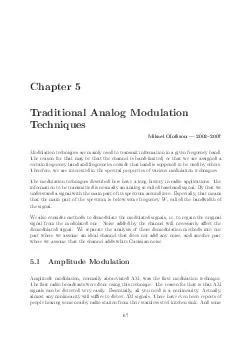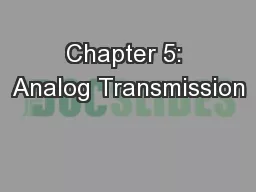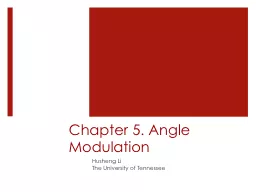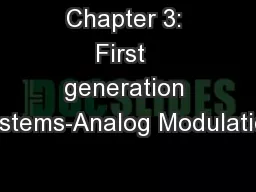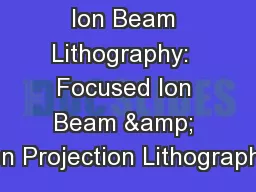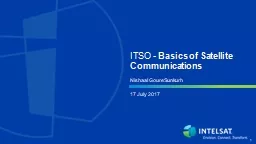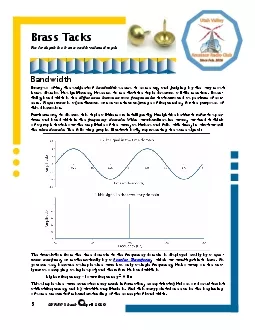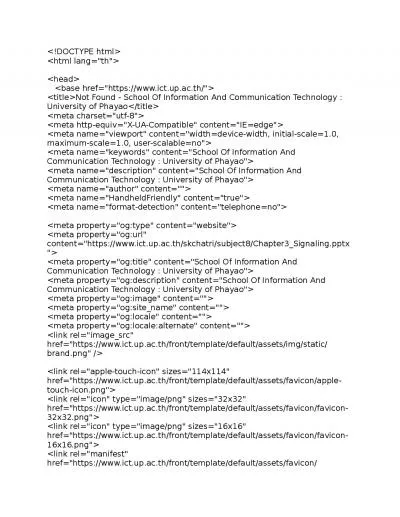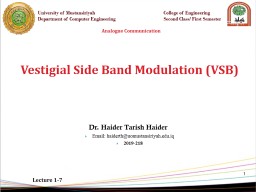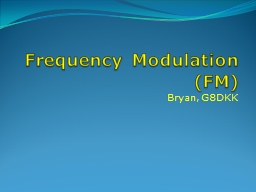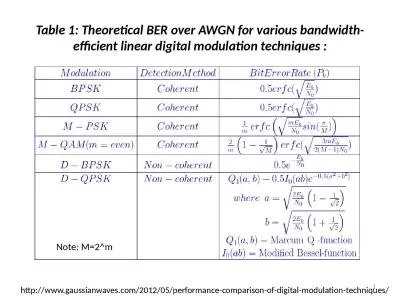PDF-Chapter Traditional Analog Modulation Techniques Mikael Olofsson Modulation techniques
Author : danika-pritchard | Published Date : 2015-01-19
The reason for that may be that the channel is bandlimited or that we are assigned a certain frequency band and frequencies outside that band is supposed to be used
Presentation Embed Code
Download Presentation
Download Presentation The PPT/PDF document "Chapter Traditional Analog Modulation T..." is the property of its rightful owner. Permission is granted to download and print the materials on this website for personal, non-commercial use only, and to display it on your personal computer provided you do not modify the materials and that you retain all copyright notices contained in the materials. By downloading content from our website, you accept the terms of this agreement.
Chapter Traditional Analog Modulation Techniques Mikael Olofsson Modulation techniques: Transcript
Download Rules Of Document
"Chapter Traditional Analog Modulation Techniques Mikael Olofsson Modulation techniques"The content belongs to its owner. You may download and print it for personal use, without modification, and keep all copyright notices. By downloading, you agree to these terms.
Related Documents

